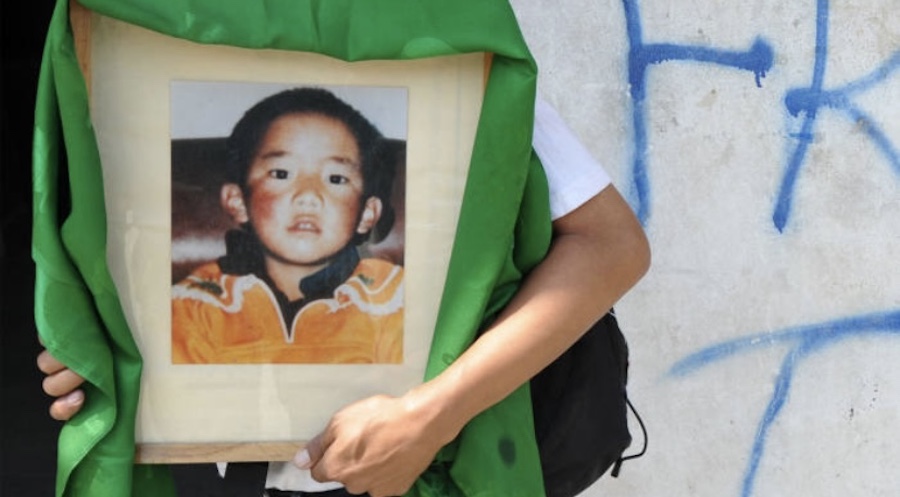Spiritual figure, political leader and Nobel Peace Prize winner, the Dalai Lama is a beloved personality to millions of people in his native Tibet, in South Asia, and the world over. The Indian Express Editor-in-Chief Shekhar Gupta talks to His Holiness on NDTV 24×7’s Walk the Talk programme, over the course of two hours. This is the first part of their long conversation
Dalai Lama, Tibetan spiritual leader
 No Indian town of its size is as famous as Dharamshala and that’s only because of my guest this week, His Holiness the 14th Dalai Lama. Not only is he the face and spirit of the Tibetan cause around the world, but, in an age when so many are looking for spiritual guidance, he stands out as one of the most prominent and proficient providers of spiritual solace to people around the world. Welcome to Walk the Talk , Your Holiness, it’s a privilege to have you here.
No Indian town of its size is as famous as Dharamshala and that’s only because of my guest this week, His Holiness the 14th Dalai Lama. Not only is he the face and spirit of the Tibetan cause around the world, but, in an age when so many are looking for spiritual guidance, he stands out as one of the most prominent and proficient providers of spiritual solace to people around the world. Welcome to Walk the Talk , Your Holiness, it’s a privilege to have you here.
Thank you.
This has been your home for 45 years. People call it your home in exile. So what does Dharamshala mean to you?
Actually, we spent our first year in Mussoorie, and then came to Dharamshala. Initially, we felt Dharamshala to be more isolated, particularly from Delhi ( laughs ). At that time, electricity and other facilities were quite poor. So, it was not very comfortable in the beginning, but eventually we found the open space very useful for our Children’s Village and other establishments. The only thing that brings us a little anxiety is earthquakes ( laughs ) otherwise, there’s a beautiful scenery and the local people are very peaceful.
But you’ve had tremors and anxieties in your own life.
Of course, it’s like on a long flight, if there’s turbulence, you feel the water coming up in your hands ( laughs ).
So, the Dalai Lama has the fear of flying? I thought ordinary mortals had that problem. What do you when the plane shakes? Do you pray?
It’s a matter of karma .If I have made the sort of karma that brings my plane down, it will happen.
But, for someone like me who’s a nervous flier, if I knew the Dalai Lama was on my flight, I would worry less. I would hope the Dalai Lama’s karma would take us all to safety.
But my karma failed to protect Tibet (smiles ).
Well, not quite. You’re not counting it as a lost cause, yet.
That’s right.
And sometimes as you say and as is believed in your faith, it may take many lives; the karma of one life may not be enough.
True. And like Tibet, other events like the tsunami or the recent earthquake, these are not due to individual karma but come from the common karma of the community.
But that’s odd. Isn’t it why should God punish so many for the karma of some? Why this mass punishment?
I think there is a different answer for that, according to different concepts. There are the theistic traditions, whose central faith is in a creator or God. Then there is Buddhism, there is Jainism and the other ancient Indian traditions which see everything as happening according to karma , the law of causality.
But still, Your Holiness, something like the tsunami or the earthquake or the flooding in New Orleans, you say that it comes from the karma of a community, but a lot of innocents get punished. Is that fair?
Well, you see, again according to ancient Indian thought, we have the concept of rebirth, several lives. So, an event we face can come from karma not necessarily created in this life, but in a previous one. A person can look innocent, but he suffers due to his past karma . That, you see, is the Buddhist explanation, and is so in Jainism as well.
And it may be a coincidence that a lot of them were there, exposed to the same calamity?
That’s right: it’s the same kind of karma that has been created. Also, it is not necessary that people who experience suffering at the same time, in the same area, have created that karma there. They may have done so in different places, even on another planet. But it was the same kind of karma , the same amount of positive or negative karma . So, at another occasion, all these people then suffer, all these sentient beings born at the same time.
Your Holiness, one of the things your aides warned me about was how people ask you the same questions too many times and sometimes you get bored. You’ve been asked many times about reincarnation and rebirth. So, I won’t bore you by asking about that. But let me ask you about your two homes: Dharamshala and Tibet. I was reading Pico Iyer, and he describes how you told him that the saddest day of your life was the day you left Tibet.
It was the 17th of March, 1959. I decided to leave the very day I left, around noon. It was the final decision, there was no alternative except escape. I left at exactly 10 pm that night. I wore ordinary Tibetan dress and carried a gun!
Like a soldier. Was that the only time you carried a weapon?
( laughs ) Yes. I was supposed to look like the people who used to guard the Norbulingka Palace, the bodyguards. I followed them; I wasn’t wearing my glasses — I wore them even at that time — and all the time the gun was becoming heavier and heavier.
So the only time the Dalai Lama carried a gun was to escape, not to fight?
( laughs ) That’s right. Outside, beyond the outer wall, there was a river, a small river but it had a lot of stones and I was without my glasses. So there I was, stumbling across ( laughs ). But anyway, the saddest thing was parting from people I had to leave behind; they were from my entourage, mainly monks and also sweepers. They were my playmates and I considered them very close friends. Most of them stayed behind; that parting was terrible. We may never meet again.
And that pain remains?
Oh yes! And then there was my small dog. But the fortunate thing is, that dog was not very friendly to me as I was sometimes strict with him. I took disciplinary action ( both laugh ).
You have great love for animals. I see a lot of cats here. You’ve talked of how animals are capable of kindness and love, and you’ve said somewhere that kindness is superior to faith.
I think animals demonstrate that most clearly. They have no faith, but if you treat them very sincerely, without trickery, if you’re giving them food because you want to catch them, oh, they know. But if you are sincere, if you show them genuine friendship, they really respond. Except for some small animals, like insects, I really wonder whether mosquitoes have that capacity. When they are not the malaria-carrying kind, I sometimes give them my blood.
You let them bite you?
If I am in a good mood. If I’m not in a good mood…
Then no mosquito will dare come near to wag its tail at you ( both laugh ).
If I give them my blood peacefully, they just sit. I don’t know if they have the capacity for appreciation or closeness. But, otherwise, most animals have that.
I’m fascinated by this distinction you make between kindness and belief, and how you make kindness the more important.
I think the main purpose of all the major religions is to promote, to strengthen, these humane values, which we all have from birth. Kindness, compassion, the sense of caring, the sense of concern, of community, of responsibility. We all have the potential for these things, right from birth.
And to also control what is not good, what in the Sanskrit tradition are called kaam , krodh, moh, lobh — passion, anger, attachment, greed.
I think these emotions — attachment, hatred, fear, arrogance — they also have their own purpose. For example, one feels attachment so that one may have all the facilities for a happier life — friendship, wealth, fame. We suppose that attachment will bring all these positive things to us. Anger, hatred: they are meant to expel all the factors which are causing us harm
Like a detoxification process?
But where we are misled, is that all these emotions are mixed essentially with ignorance. Attachment or anger seem to help you, but because that view is unrealistic. I met recently with a scientist who works with the mind.
A cognitive scientist?
Yes. He told me that 90 per cent of anger, of hatred, is actually exaggerated. When you see something negative, you develop anger and hatred towards it, but 90 per cent of that negativity is a mental projection. It is not reality. The Buddhist explanation also works on the same concept. When we carry that emotion into verbal or physical action it becomes even more unrealistic. Instead of solving the problem, we sometimes create more of it. On the other hand, there is the sense of compassion. But genuine compassion, not mixed with ignorance, the sense of concern without attachment. When you approach action from these positive emotions, your action becomes more realistic.
To get rid of ignorance, do you need a spiritual teacher, a guru?
No. It’s not necessary. Study. Use your brain. Investigation, experiment, these are very important. Our education, from kindergarten up to university, is supposed to reveal reality in different fields. Usually, between appearances and reality, there is a gap. Our education is supposed to reduce this gap.
And that’s the difference between an enlightened person and an unenlightened one?
Oh yes. I mean, there are big differences between, say, an educated person and an uneducated person. Both want a happy, a successful, life, but their approach is different. Even within a person, at a younger age, when he has less experience, less knowledge, he has a different approach than he does later, when he has more education, more awareness, more experience. Education is the key.
Your Holiness, I was reading an interview of yours from which I am going to steal a question; it was a very good one. The interviewer talked about how you keep saying that this century is better, more benevolent, less violent than the previous one. She then asked you how, if that is so, can one explain Iraq or 9/11 to one’s children? Your answer was that one needs compassion all the time and you took the example again of a dog. If a dog attacks you and is going to bite, you can’t say “non-violence, non-violence”.
You have to take the appropriate action, or counter-action.
And that may not be non-violent.
I think in the deeper sense, the meaning of non-violence does not entirely depend on physical or verbal action, but on your motivation. Any action carried by a sense of concern or compassion, no matter what its appearance, even if it looks harsh, is essentially non-violent. On the other hand, let’s say, I want to cheat you. I smile, I use nice words, even bring you a nice gift. It looks non-violent, but that’s superficial, because the main motivation is that I want to cheat, I want to take advantage of you. That is the worst kind of violence. Without anger you cannot expel negativity, but, I think, anger through awareness is more appropriate, more effective, because then there is no exaggeration. You need that force to expel negativity, but you also see reality.
Your Holiness, you also use the example of a man coming to shoot you. You say one has to do something, but instead of shooting him in the head, maybe, one could shoot him in the leg.
Shooting in the head means killing.
But shooting in the hand or leg is self-protection?
That’s right. Also, if that person is alive, then perhaps you may tease him a little about it later ( both laugh ).
If he’s willing to be teased. Now tell me, Your Holiness, if you apply this example after 9/11, what is it that Bush’s America is doing to the Islamic world or to Iraq? Is it shooting it in the head, or in the foot?
( laughs ) I think the best thing is not shooting. Now, again, in these events, I feel they are due to a lack of knowledge or awareness on both sides. Neither knows fully about the other. So, sometimes, miscalculations happen. Awareness is very, very important. For example, take our own case. Tibet was very isolated in the past. Due to a lack of knowledge about the other’s values, your own attitude towards the other is sometimes a bit negative. In recent years, some media people and even writers have created the impression that there is conflict between the western world and Islamic civilisation. I think that is mainly due to a lack of contact, a lack of awareness.
The clash of civilisations?
I think that is a very unhealthy impression. A few mischievous people who come from the Muslim world cannot represent Muslims as a whole. There are many good persons among the Muslims, and Islam is a very important world religion.
Is that the feeling you get when you talk to Muslim scholars — that what is being projected today is not the true face of Islam?
That’s right. I have some Muslim friends. They have told me that any person who claims to be a Muslim and actually creates bloodshed and harm for others is not a true Muslim. That’s what they say.
Your Holiness, would you then say that the American invasion of Iraq was driven by ignorance and the fear which comes from ignorance?
I think so. I would prefer if those nations chose to develop closer relations, specially in the field of education. If people had more education, more awareness of other’s values, I think their attitude would change.
So you think it’s a mistake for the US to be in Iraq, the way they are?
I usually have the view that violent action is in principle wrong, it’s a mistake. However, in the 20th century, with the Second World War, for instance, or the Korean War, there was immense violence, suffering, destruction. But eventually something positive came out of it. But, then, the Vietnam War had the same motivation, the same goal, and it failed totally. With the Afghan crisis and the Iraq war, I usually tell people—and I believe it is so—that it is too early to say whether some good will come of it. Only history will tell.
Would you advise Bush to find a way of leaving Iraq to the Iraqis?
Actually, after that unbelievable event happened, September 11, I wrote a letter the very next day to President Bush. While I expressed my sadness and condolences, I also wrote about the counter measures for such a terrible tragedy—I believe non-violence is the most effective countermeasure and that’s what I wrote about.
It’s tough to teach non-violence to Bush, even for the Dalai Lama.
Of course, he and the White House take full responsibility. I am an outsider and an outsider may not fully understand the reality he faces. Just like the Tibetan problem, which I know, but an outsider may sometimes not understand. So you can’t blame everything on President Bush, poor Bush!
Well, at least there is somebody you can blame all the problems of the world on right now. ( both laugh ).
You know there is a Buddhist concept—interdependency, interconnectedness. I think it’s very important to keep that in mind. If you look only at one event, then it’s very easy to say: ‘This is wrong’ or ‘This is right’. But if you look at things from a wider angle, then the picture may be different. These are very complicated matters. I blame these negative events on our past negligence about our inner values. I think the reality of the 20th century and now of the 21st century, the reality of the whole planet, is something very different. Everything is interdependent, that is the reality. But we are still using old concepts to deal with it—there’s ‘we’ and there’s ‘they’.
But that is how Bush looks at the world—you are either with us or you are against us.
I think that is too simple.
So Buddhism and Bushism don’t go together?
( laughs ) I am probably going to meet Bush in November, may use that with him—Buddhism and Bushism.
I can put that in my memoirs, if I can get the Dalai Lama to quote half a line from me ( both laugh ). But, Your Holiness, when you look at the US and its allies going to Iraq to fight—in the past, they’ve gone to Vietnam, they’ve gone to Korea. There are other causes around the world, there’s Taiwan, where the Americans have threatened to take military action. Do you feel the Tibetan cause is being lost, it’s becoming more a cause for Free Tibet T- shirts.
The Tibet issue has a different background. I don’t think we can compare it with these matters. First, it is an old issue, going back to the late 1940s and 50s. Tibetans themselves remained isolated in the past. The other side, China, is a very important nation.
But do you think the cause itself is being lost now, that it’s becoming more of an exotic cause?
No. But look locally at the Tibetan cause. Because of a large number of Chinese immigrants. Tibetans have become a minority. For example, today, the population of Lhasa is around 3,00,000 of which two thirds, that means 2,00,000, are Chinese and 1,00,000 are Tibetans. Or take some other autonomous region, like Inner Mongolia. According to some, the Mongolian population is around three million. But the Chinese population is more than 10 million, some say 18 million.
(To be continued)









